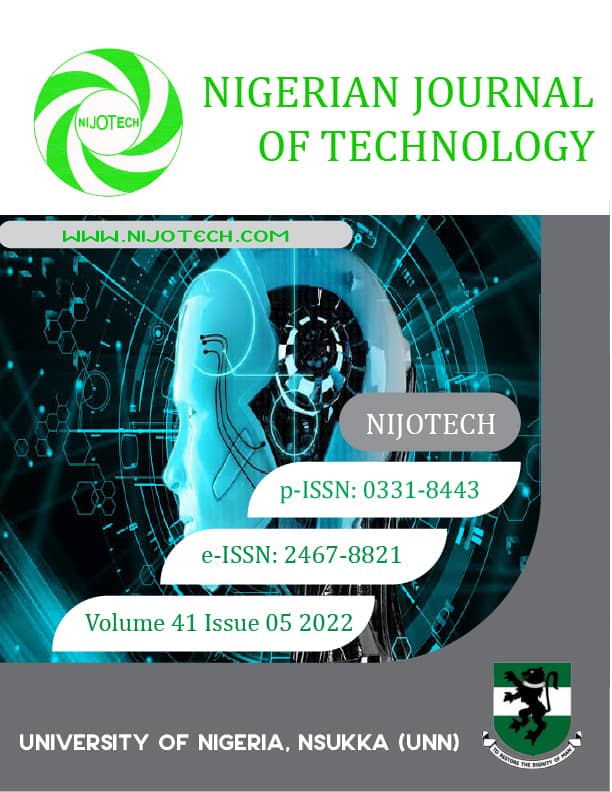THE USE OF DIMENSIONAL ANALYSIS FOR MODELING TRACTOR FUEL CONSUMPTION FOR HARROWING OPERATION
ANALYSIS FOR MODELING TRACTOR FUEL CONSUMPTION
DOI:
https://doi.org/10.4314/njt.v41i5.12Keywords:
Fuel consumption, Dimension analysis, Harrowing, Model, Soil machine implementAbstract
Fuel consumption model for predicting tractor fuel consumption per working area for harrowing operation has been developed using dimensional analysis. Generalized reduced gradient method of Excel solver was adopted for the establishment of the model’s constant. The model was validated by simulating the experimental results into the equation and coefficient determination (r2). Graphical comparison, root mean square error, and paired t-test were also used to validate. The field experiment was carried out at Rivers Institute of Agricultural Research and Training Farm in Rivers State University, Port Harcourt. The group-balanced block design was adopted. The design consisted of 9 experimental treatments with three replicates. The experimental fuel consumption per working area was determined by the quantity of fuel used per working area with the aid of fuel flow meter. The field test parameters were measured accordingly with their specific standard procedures. The field test parameters including bulk density, tractor forward speed, harrowing depth, and cone index were simulated with fuel consumption to obtain the constants in the prediction model. The developed model showed good agreement between measured and predicted results with a high coefficient of determination and low root mean square error. The paired t-test results showed no significant difference at 95 and 99 % confidence levels. Thus, suggested that the model could be used for predicting tractor fuel consumption for harrowing operations.
Downloads
Published
Issue
Section
License
Copyright (c) 2022 Nigerian Journal of Technology

This work is licensed under a Creative Commons Attribution-NonCommercial 4.0 International License.
The contents of the articles are the sole opinion of the author(s) and not of NIJOTECH.
NIJOTECH allows open access for distribution of the published articles in any media so long as whole (not part) of articles are distributed.
A copyright and statement of originality documents will need to be filled out clearly and signed prior to publication of an accepted article. The Copyright form can be downloaded from http://nijotech.com/downloads/COPYRIGHT%20FORM.pdf while the Statement of Originality is in http://nijotech.com/downloads/Statement%20of%20Originality.pdf
For articles that were developed from funded research, a clear acknowledgement of such support should be mentioned in the article with relevant references. Authors are expected to provide complete information on the sponsorship and intellectual property rights of the article together with all exceptions.
It is forbidden to publish the same research report in more than one journal.











